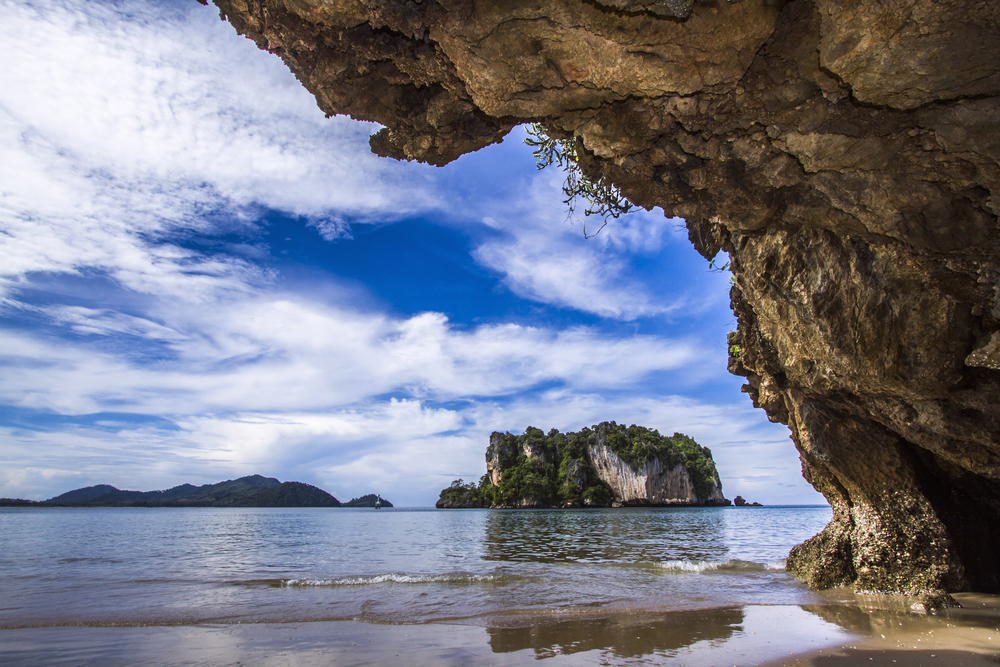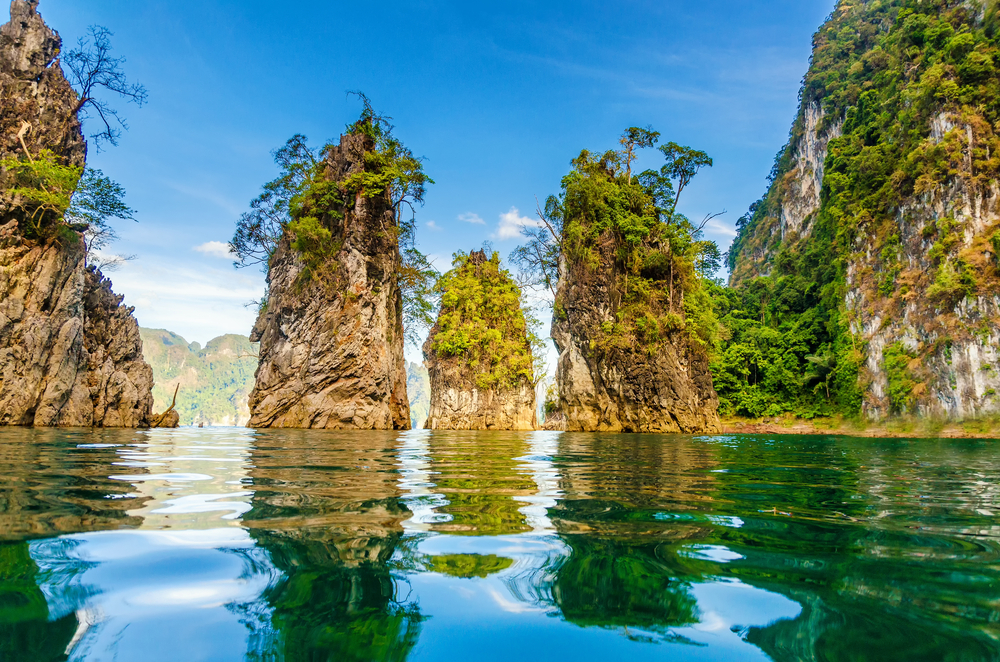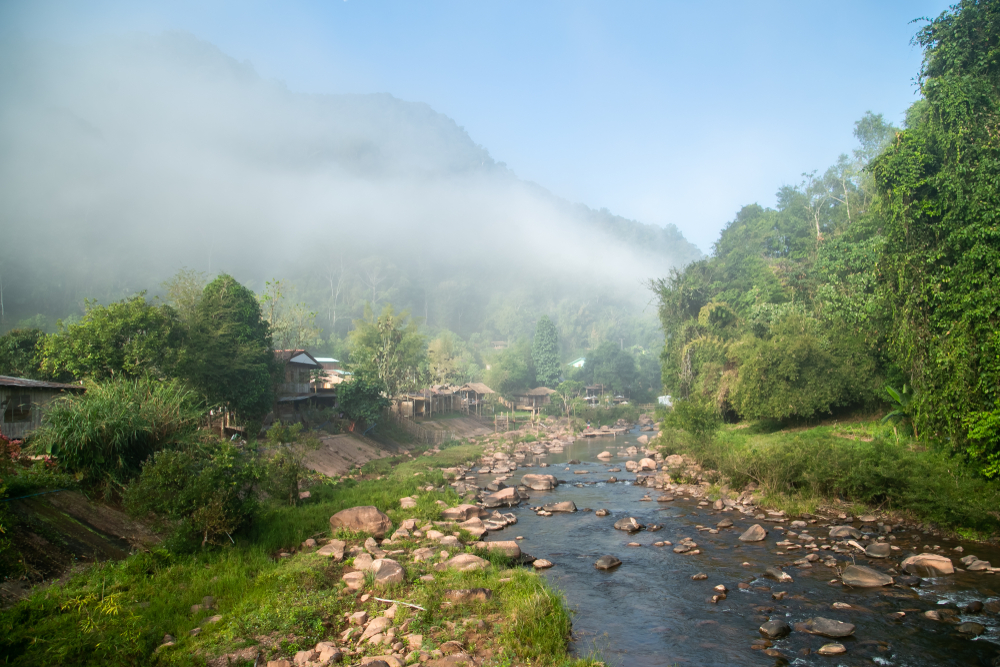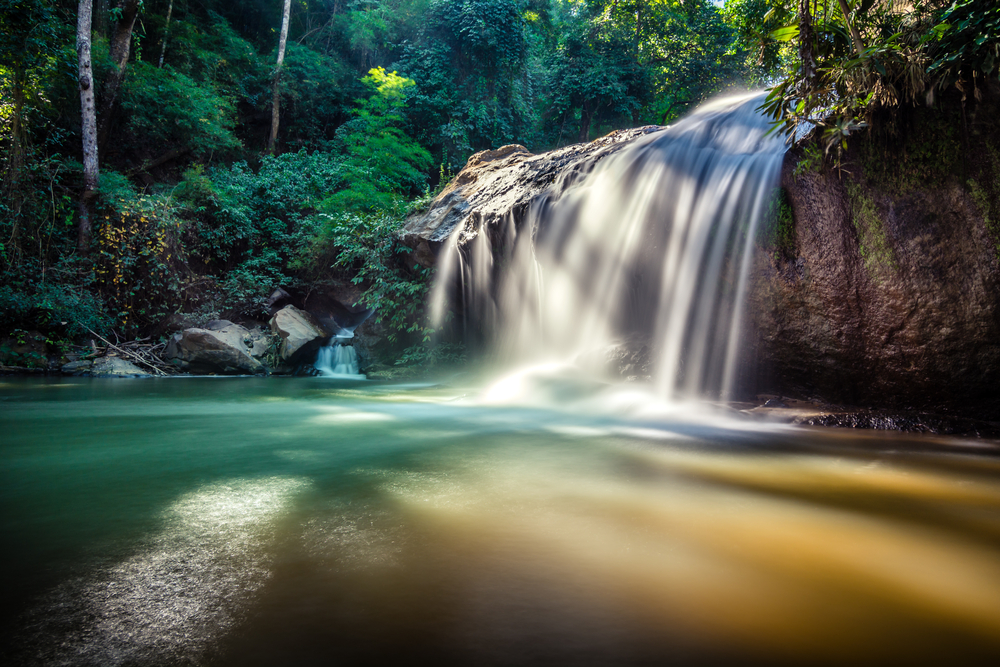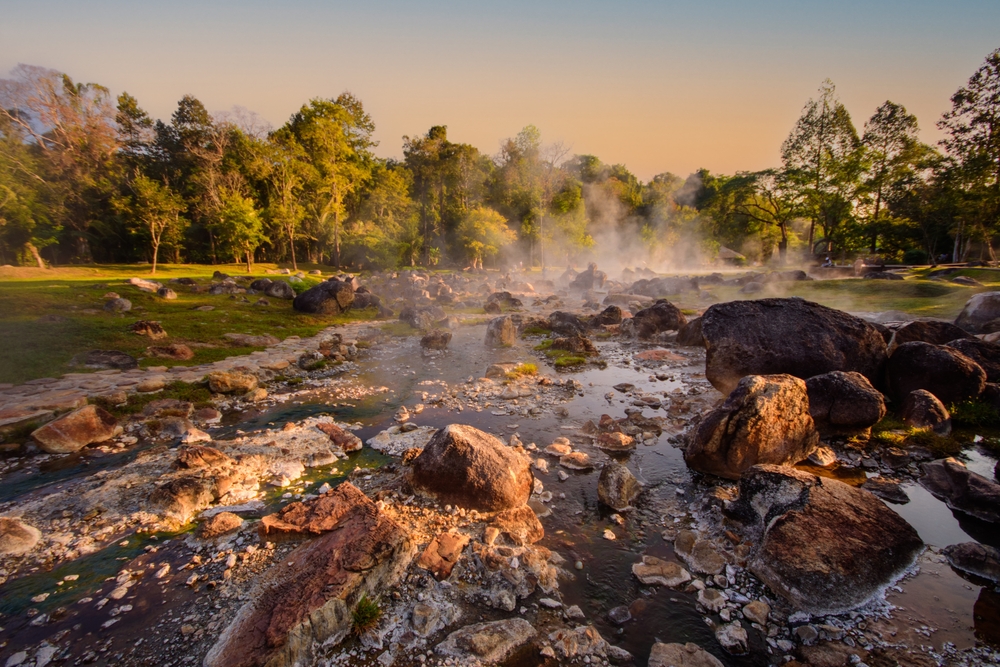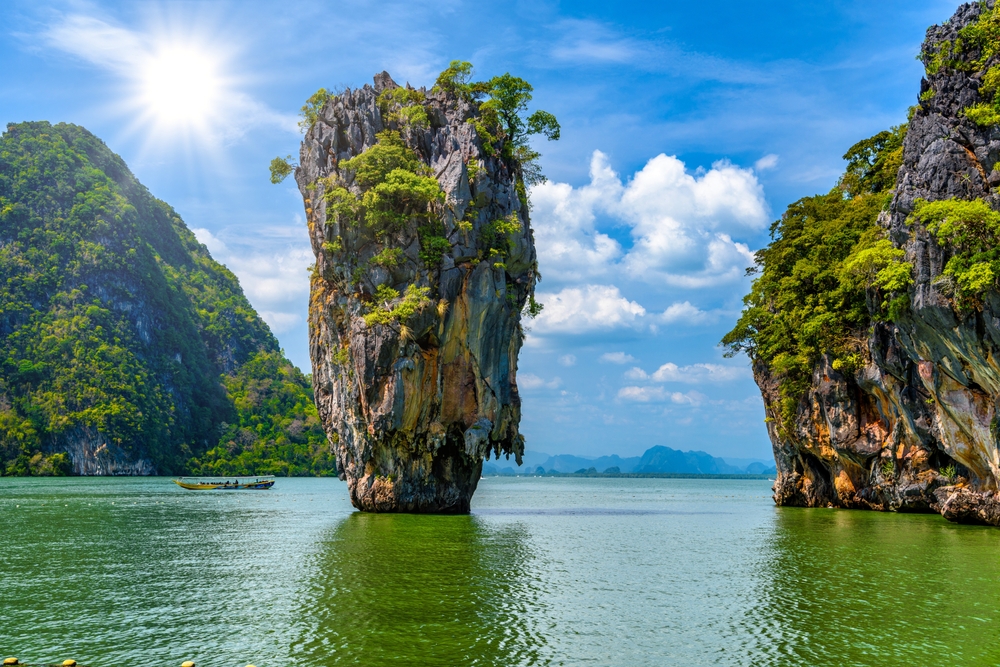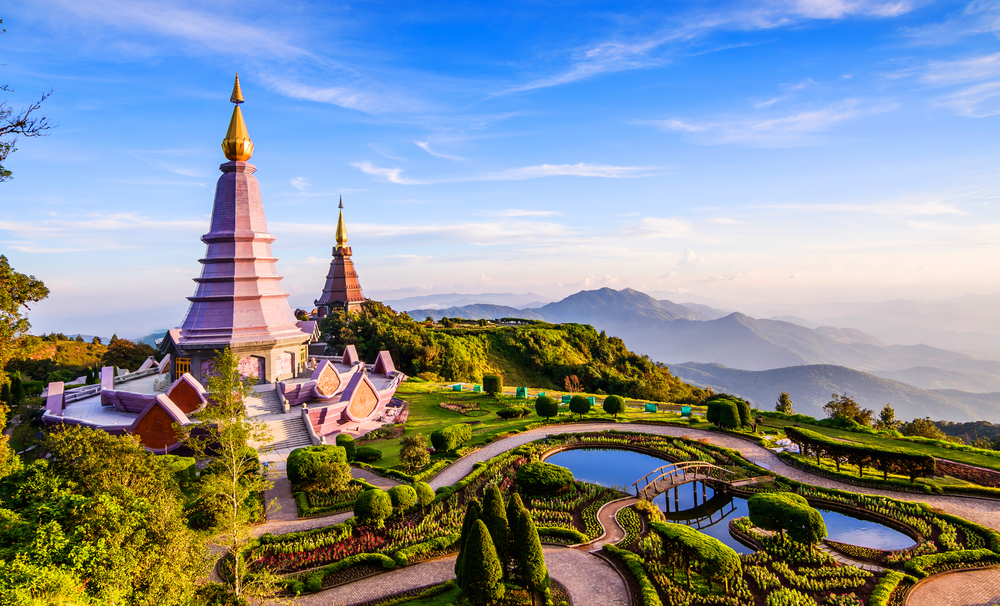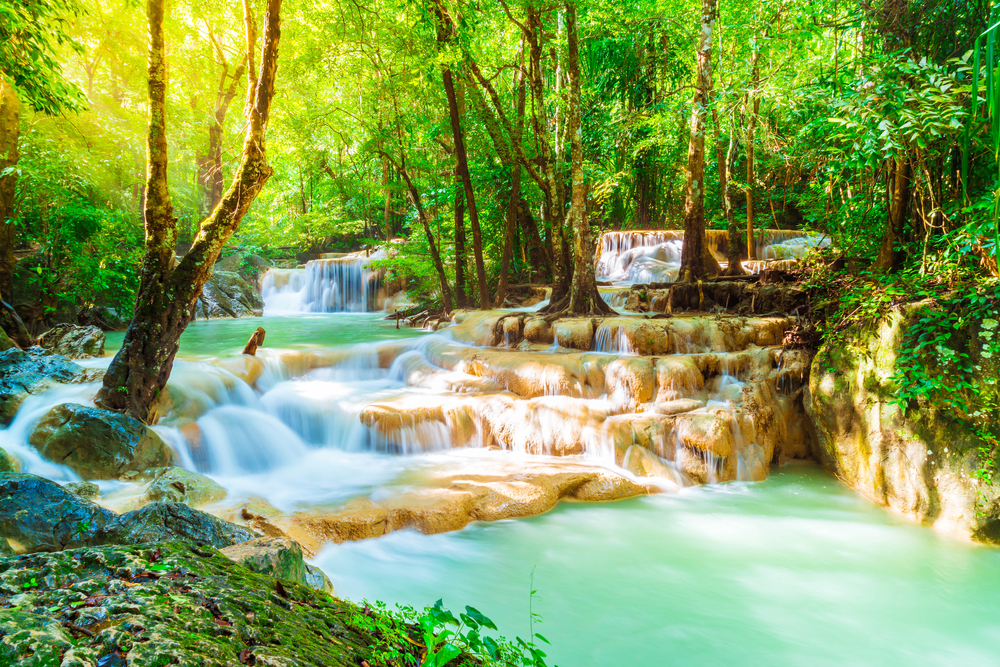Hat Chao Mai Overview
Hat Chao Mai National Park, or อุทยานแห่งชาติหาดเจ้าไหม in Thai, is a stunning coastal park located in the Trang Province of southern Thailand. Covering an area of approximately 89 square miles (230 square kilometers), this national park offers a diverse blend of marine and terrestrial ecosystems.
It is nestled along the Andaman Sea and features a picturesque coastline interspersed with limestone cliffs, mangrove forests, and pristine beaches. The park is renowned for its striking karst formations, such as the towering cliffs of Ko Muk and the breathtaking Morakot Cave (Emerald Cave), a hidden gem that can only be accessed through a tunnel during low tide.
The terrain of Hat Chao Mai is a mosaic of sandy beaches, dense mangroves, and verdant tropical forests. The park is dotted with islands, including Ko Kradan, Ko Cheuk, and Ko Waen, each offering its unique charm. Coral reefs surround many of these islands, harboring a vibrant underwater world.
The forests are dominated by native flora, including towering dipterocarp trees and a variety of ferns and palms. The mangrove forests along the shore serve as vital habitats for marine and terrestrial life while acting as natural coastal protectors against erosion.
Wildlife enthusiasts will find Hat Chao Mai a haven for diverse species. Dugongs, also known as sea cows, are among the park’s most notable inhabitants and can often be spotted grazing on seagrass meadows near the coastline. Other marine life includes dolphins, sea turtles, and a plethora of fish species that thrive in the coral reefs. The terrestrial areas of the park host small mammals like crab-eating macaques and Sunda pangolins.
Birdwatchers can enjoy sightings of kingfishers, herons, and hornbills, making it an avian paradise. The mangroves and forested areas also provide refuge to various reptiles and amphibians.
Visitors to Hat Chao Mai National Park can experience its beauty in numerous ways. Snorkeling and diving are popular activities, allowing explorers to marvel at the vibrant coral reefs and marine life. Kayaking through the mangroves offers a serene encounter with the park’s unique ecosystems, while boat tours provide access to the islands and the enchanting Morakot Cave. For those seeking relaxation, the pristine beaches of Ko Kradan and the mainland are perfect for sunbathing and swimming. Nature trails through the park’s forests provide opportunities for hiking and wildlife spotting.
The park’s management faces challenges such as balancing tourism with conservation. Protecting the vulnerable dugong population and preserving coral reefs from environmental degradation remain top priorities. Efforts have been successful in some areas, with community-driven initiatives and collaboration with conservation organizations helping to enhance sustainability. Continued education and awareness campaigns are crucial to maintaining the park’s biodiversity while accommodating its growing popularity as a tourist destination.








































































